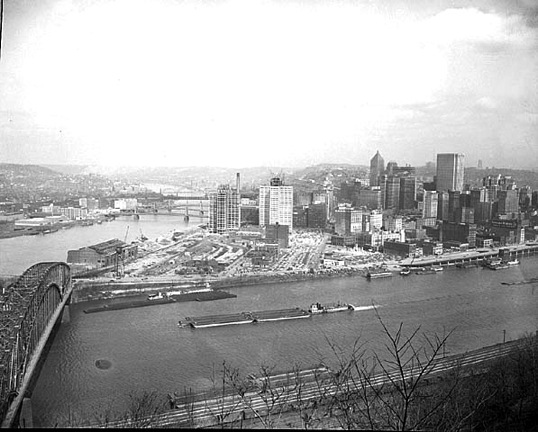
According to the 2000 U.S. Census there were 1,153,295 people in the U.S. who reported Greek ancestry, about 0.4% of the total population. In the Pittsburgh Metropolitan Statistical Area (MSA), which includes both of the church locations studied here, there were 14,653 (0.6%) people who reported Greek ancestry, the vast majority of which (12,820; also 0.6% of its respective suburban populations) resided in suburban locations outside of Pittsburgh’s city center.
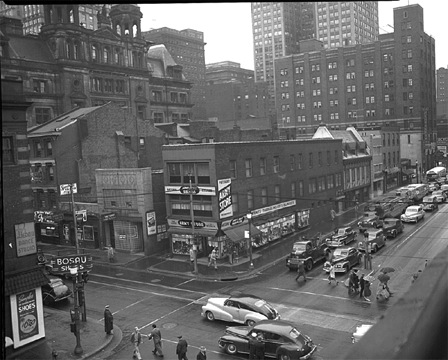
The first Greek immigrants began to arrive in Allegheny County in the 1890s and by 1893 there were about 50. Most were sailors from various Greek islands and engaged in manual labor at first. Soon, many entered business for themselves; some were street vendors, others were restaurateurs or confectioners. Men were often employed in restaurants owned by father or brother until they either assumed the business or opened a new one. The first Greek restaurant in Pittsburgh was located at Diamond Square in the Market District.
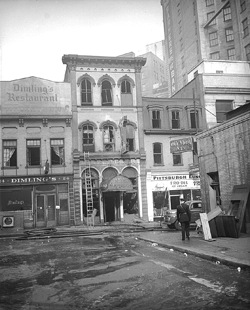
The peak of Greek immigration to Allegheny County was reached between 1910-1912. Most immigrants were from the Aegean islands, Asia Minor and the Greek mainland. In 1944, there were fourteen brotherhoods in Allegheny County which represented the geographic origin of the immigrants. The main settlements at the time were North Side, Oakland, Downtown, East Pittsburgh, McKeesport and Monessen.
Monessen was settled in 1902 by four people, and by 1960, there were 40 Greek-owned businesses in this town. According to "Keystone Magazine" of Pittsburgh Steel, the first Greek in Monessen was George Katsuleris form the Aegean island of Chios. Most settlers in Monessen are of Chian descent. The Greek immigrants lived primarily around Twelfth Street and Schoonmaker. A number of businesses were founded: Stupakas Fish Market, a candy store at 1260 Schoonmaker, the Harry Croussouloudis restaurant at 1210 Schoonmaker, the Costas Croussouloudis Grocery at 1214 Schoonmaker and the Theo Gianodis Dairy at 1116 Schoonmaker. New businesses were founded along Morgan, Parkway and Highland. In the Tin Mill, immigrants worked as picklers, at Pittsburgh Steel, they were either in the labor gang or wire mill. Some, experienced divers, were often called to dive into the Monongahela River to inspect the underwater machinery. A number of restaurants were also established including the Victory Restaurant and the Monessen Restaurant.
In 1930, census figures for Allegheny County show 2989 immigrants, and 2265 second generation. In 1940, there were 2570 individuals registered as immigrants in Allegheny County.
Xenides' survey, in 1919, lists 1500 Greeks in Pittsburgh, 2000 in Monessen, with 1800 in Cleveland OH, 1500 in Youngstown OH, 1200 in Weirton WV, 600-700 in Reading, PA, 400-600 in Wheeling WV, 400-600 in Warren, OH.
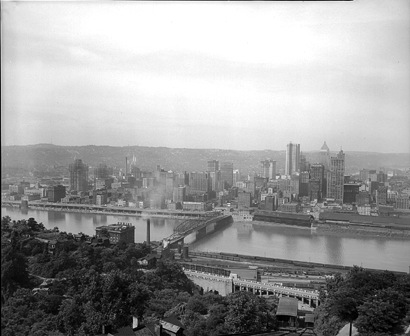
In 1944, there were four Greek Orthodox churches (Oakland, North Side, East Pittsburgh and McKeesport) in Allegheny county. In other areas, Monessen, Vandergrift and Clairton also were home to Greek churches. The first Greek Orthodox church in Allegheny County was established in 1904 on Diamond Street, and shortly after, another one was established on Wylie Avenue. In 1916, the two merged and relocated to Dithridge Street in Oakland in 1920.
By 1940, Greek communities were established in Beaver County, Washington County and Westmoreland Counties. Most immigrants in these areas worked in the steel and coal industry.
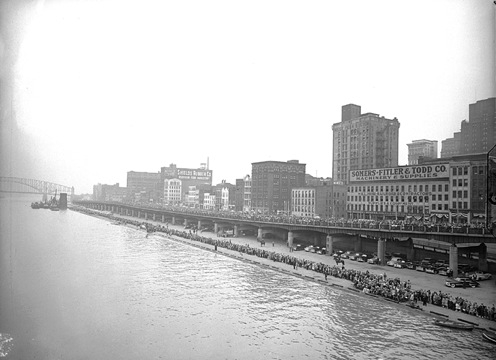
In 1905 the Jones and Laughlin Steel Company started construction of a huge steel-making plant along the Ohio River in Hopewell Township. Adjacent to the new plant were two communities, the tiny Borough of Aliquippa, site of a popular amusement park on the Pittsburgh and Lake Erie Railroad, and the even smaller village of Woodlawn. Greek immigrants to Aliquippa, Beaver and Hopewell found jobs in the heaviest and hardest work in the mills, handling steel billets, loading trains in cinder pits; labor that demanded strength in large measure. The Greek Orthodox Community of Aliquippa received a charter from the Beaver County Courts on January 13, 1919.
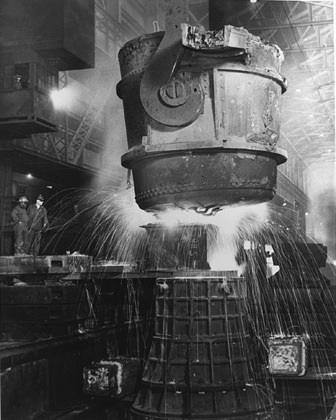
Canonsburg, a small industrial town approximately 20 miles southwest of Pittsburgh but in neighboring Washington County, was initially a destination and settlement for many immigrants seeking economic opportunities. Greeks migrated to Canonsburg around 1905 when they were informed of a new tin mill factory that needed workers. The tin mill in Canonsburg attracted many immigrants who were just passing through on their way to other U.S. destinations. The Greek-Americans who reside there today are for the most part descendants of these original migrants.
By July of 1918 Greek immigrants residing in Canonsburg decided they needed a steady place in which to conduct their church services. A hall was rented to conduct church services until 1925, when their growing populace elected to purchase the Ukrainian Greek Catholic Church on Blaine Avenue in Canonsburg’s East End (where most Greeks in Canonsburg lived). They named this community “All Saints.”
The second wave of immigrants came between 1946-1965, again, mainly from Aegean islands and the Greek mainland.
All the information above is taken from the following sources:
"Allegheny County's Americans by Choice", published by The American Service Institute of Allegheny County and edited by Margaret E. Hartford, 1944, pp. 21-22
"The Greeks in America", J.P. Xenides, 1922
"Greek Immigration to the United States", Fairchild, 1911
" 'Greeks in Monessen' exhibit ready to open", The Valley Independent, March 8, 2007
"Monessen: A Typical Steel Country Town", Cassandra Vivian, Arcadia Publishing, 2002
Twenty-First Century Participation in Two U.S. Greek Orthodox Churches, Christine Alex (Ph.D. Thesis), 2007, University of Pittsburgh
Children of the Colossus: The Rhodian Greek Immigrants in the United States, James W. Kiriazis, in Immigrant Communities and Ethnic Minorities in the United States and Canada (Vol. 67) AMS Press Inc., New York., 1989